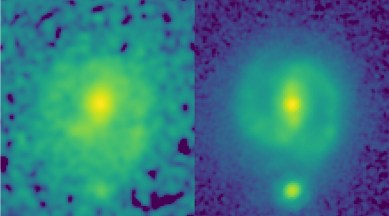Webb telescope captures Milky Way-like galaxies from a much younger universe
Images taken by the James Webb Space Telescope have revealed "barred" galaxies from a time when the universe was about 25 per cent of its current age.

New images taken by NASA’s James Webb Telescope have revealed galaxies with stellar bars dating back to a time when the universe was just 25 per cent of its present age. Stellar bars are elongated features of stars that stretch from the centres of galaxies into the outer disk.
According to the University of Texas at Austin, finding such barred galaxies, similar to our Milky Way, will mean that astrophysicists will have to refine their theories of galactic evolution. Before these images were taken by Webb, no space telescope detected bars at such an early stage of the universe’s life.
“I took one look at these data, and I said, ‘We are dropping everything else! The bars hardly visible in Hubble data just popped out in the JWST image, showing the tremendous power of JWST to see the underlying structure in galaxies,” said Shardha Jogee, co-author of the research article accepted for publication in The Astrophysical Journal Letters.
These stellar bars play an important role in galactic evolution by funnelling gas into the central region of the galaxies, boosting star formation. In a way, they can be thought of as solving a “supply chain problem” in galaxies. Just like how raw materials are taken from ports to factories to produce new products, these stellar bars transport gas into the central region where the gas is converted into new stars at a rate that is between 10 to 100 times faster than in the rest of the galaxy.
Barred galaxy simulation from College of Natural Sciences on Vimeo.
This funnelling of gases by the bars also helps grow supermassive black holes in the centres of galaxies by channelling some of the gas parts of the way. “This discovery of early bars means galaxy evolution models now have a new pathway via bars to accelerate the production of new stars at early epochs,” added Jogee.
The existence of these early bars challenges theoretical models as they need to get the galaxy physics right in order to predict what is the actual abundance of bars. According to the University of Texas at Austin, the researchers’ next goal is to test different new models of galaxy physics.